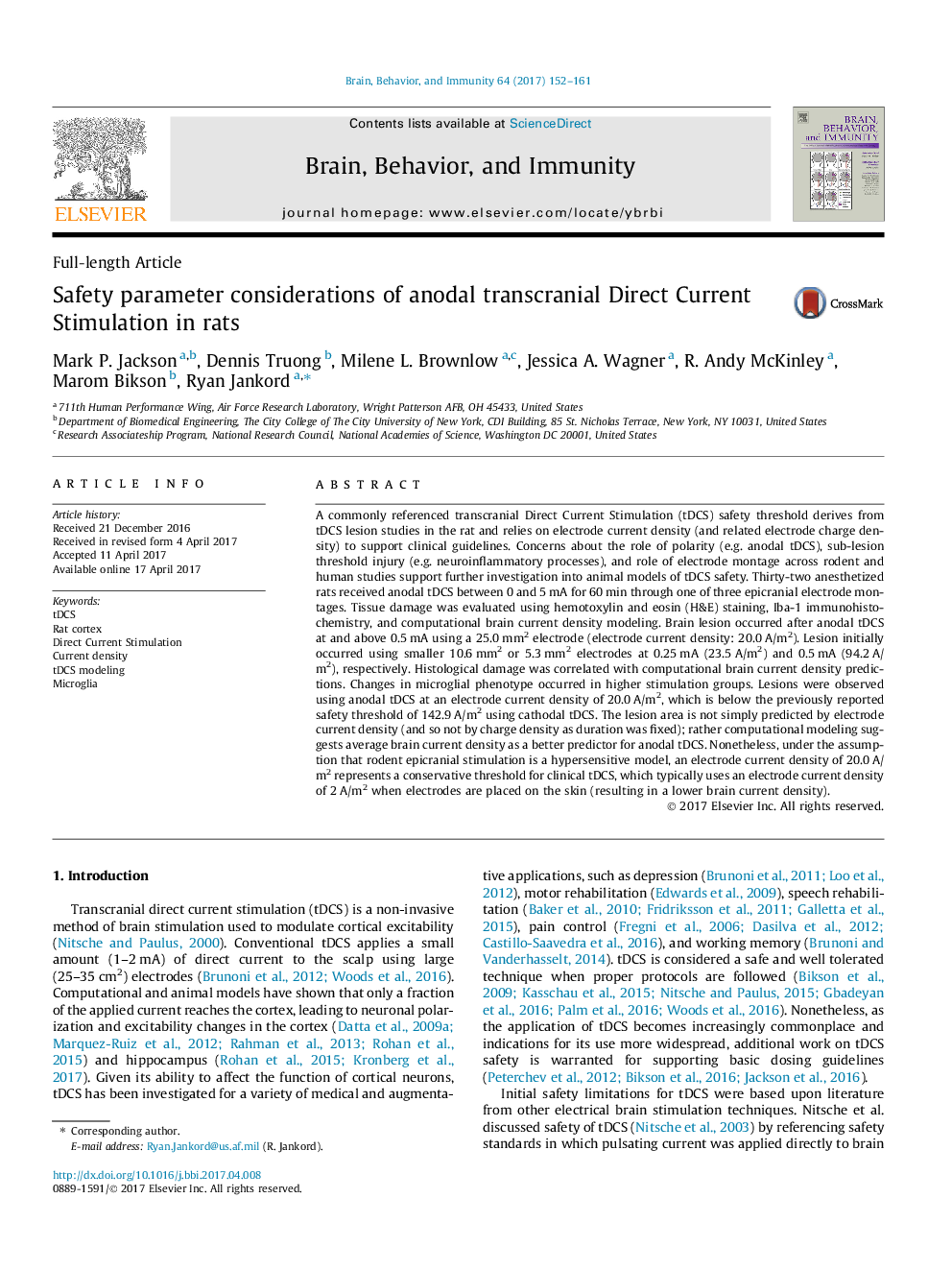| کد مقاله | کد نشریه | سال انتشار | مقاله انگلیسی | نسخه تمام متن |
|---|---|---|---|---|
| 5040630 | 1473903 | 2017 | 10 صفحه PDF | دانلود رایگان |
- Anodal tDCS can induce rodent brain lesion at 20.0Â A/m2 electrode current density.
- In vivo/FEM experiments suggest brain current density better predicts brain lesion.
- Translationally meaningful animal tDCS safety models must be carefully rationalized.
A commonly referenced transcranial Direct Current Stimulation (tDCS) safety threshold derives from tDCS lesion studies in the rat and relies on electrode current density (and related electrode charge density) to support clinical guidelines. Concerns about the role of polarity (e.g. anodal tDCS), sub-lesion threshold injury (e.g. neuroinflammatory processes), and role of electrode montage across rodent and human studies support further investigation into animal models of tDCS safety. Thirty-two anesthetized rats received anodal tDCS between 0 and 5Â mA for 60Â min through one of three epicranial electrode montages. Tissue damage was evaluated using hemotoxylin and eosin (H&E) staining, Iba-1 immunohistochemistry, and computational brain current density modeling. Brain lesion occurred after anodal tDCS at and above 0.5Â mA using a 25.0Â mm2 electrode (electrode current density: 20.0Â A/m2). Lesion initially occurred using smaller 10.6Â mm2 or 5.3Â mm2 electrodes at 0.25Â mA (23.5Â A/m2) and 0.5Â mA (94.2Â A/m2), respectively. Histological damage was correlated with computational brain current density predictions. Changes in microglial phenotype occurred in higher stimulation groups. Lesions were observed using anodal tDCS at an electrode current density of 20.0Â A/m2, which is below the previously reported safety threshold of 142.9Â A/m2 using cathodal tDCS. The lesion area is not simply predicted by electrode current density (and so not by charge density as duration was fixed); rather computational modeling suggests average brain current density as a better predictor for anodal tDCS. Nonetheless, under the assumption that rodent epicranial stimulation is a hypersensitive model, an electrode current density of 20.0Â A/m2 represents a conservative threshold for clinical tDCS, which typically uses an electrode current density of 2Â A/m2 when electrodes are placed on the skin (resulting in a lower brain current density).
Journal: Brain, Behavior, and Immunity - Volume 64, August 2017, Pages 152-161
